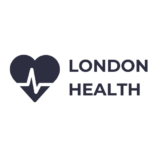Liposuction is an increasingly popular cosmetic treatment as people go in pursuit of the perfect body. Contrary to popular belief, liposuction is not a long-term solution for people who are overweight and should really only be considered as a means of getting rid of fat which cannot be shifted by eating well and exercising; people who have lost a lot of weight may also benefit from liposuction as they may be left with large amounts of excess skin. Liposuction is usually carried out on the thighs, stomach and lower back.
Who should consider liposuction?
People who lead a healthy lifestyle but have areas of fat which they can’t seem to get rid of may benefit from liposuction. People who are severely overweight should not consider liposuction as an easy way out as it can only be used to get rid of certain areas of fat rather than reducing the overall body fat percentage of an individual; eating a healthy diet and doing regular exercise should be used to combat obesity.
What does liposuction involve?
Liposuction involves removing fat from certain areas of the body; prior to the operation the surgeon will discuss which areas of the body need liposuction with the patient. During the procedure local anaesthetic, saline solution and adrenaline will be injected into to the area where the fat will be removed; an incision will then be made and a tube that is attached to a vacuum pump will be inserted into the tissue. The surgeon uses the tube to break up the fatty tissue and the vacuum sucks out the fat and fluid. More than one incision may be made if liposuction is being carried out on a large area. Once the surgeon is satisfied with the amount of fat removed, they will close the incision using stitches and bandage the area.
What happens after the liposuction operation?
It may take a while for the effects of the anaesthetic to wear off so patients are advised to rest. Once the anaesthetic has worn off the patient should be able to go home; usually patients are discharged the day after surgery if everything has gone well. Patients are advised to rest for a week after the operation; recovery may take longer if liposuction has been carried out on several areas of the body. Patients should not take part in strenuous activity or contact sports for at least 4 weeks after the operation; however, light exercise such as walking, is recommended. Stitches will usually be removed after one or two weeks; dissolvable stitches will usually disappear after two or three weeks.
Are there any side-effects to liposuction?
Common side-effects of liposuction include swelling, pain and bruising; applying ice and taking pain relief will help to ease these symptoms. Liposuction can also cause temporary numbness but this should wear off after a short period of time. More complex side-effects include damage to internal organs, bleeding, pulmonary oedema (this is a collection of fluid in the lungs) and pulmonary embolisms (this occurs when fat gets into the bloodstream and gets into the lungs; these complications are extremely rare but patients should be aware of the all the risks associated with this procedure.
How much does liposuction cost?
The cost of treatment depends on how much liposuction has been carried out and the surgeon’s fees; costs vary considerably according to which surgeon or clinic you choose for your treatment. As a general guide, patients should expect to pay between £2000 and £5000 for liposuction.
How long does liposuction last?
In the vast majority of cases, liposuction should produce lifelong results.

